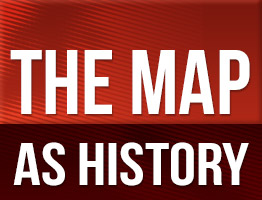This map is part of a series of 5 animated maps showing .
▶ View series: Independence for Spanish American colonies
SubscribeSimón Bolívar
This map is part of a series of 5 animated maps showing the history of Independence for Spanish American colonies.
Born in Caracas on July 24, 1783 into a rich Creole family, Simón Bolívar y Palacios’s childhood was marked by the deaths of his father in 1786 and his mother in 1792.
At the age of 16, during his first stay in Europe, he met the young aristocrat María Teresa Rodríguez del Toro, whom he married in Madrid in 1802. But just eight months later, his wife died of Yellow Fever in Caracas.
In 1803, Bolívar returned to Europe to begin a long journey which took him to places such as Paris and Rome where, in August 1805, he pledged a solemn oath in favour of Latin American independence.
But it was only in 1808, with the French occupation of Spain and the gradual collapse of colonial rule in America that Bolívar, now back in Venezuela, threw himself wholeheartedly into the revolutionary cause. In 1810, the Supreme Junta of Caracas sent him as a diplomatic envoy to London. He then backed the declaration of independence of the Venezuelan provinces on July 5, 1811 and, under the command of General Francisco de Miranda, began a long military career which saw him fighting royalist forces on numerous occasions.
When the First Republic failed in July 1812, Bolívar broke with Miranda over the General’s capitulation to Spanish troops and went into exile in Curaçao.
The following year, he launched what became known as the “Admirable Campaign”. This took him from Cúcuta in New Granada to Caracas, which he entered in triumph on August 6, 1813, earning himself the title “Liberator”. But royalist counter-offensives forced Bolívar to flee to Kingston where, in September 1815, he wrote his “Jamaica Letter” with the aim of persuading the United Kingdom to back independence movements in Latin America.
Bolívar’s dreams of unity finally bore fruit after a new military push against royalists in the eastern provinces of Venezuela from 1817. This led to the Supreme Congress of the Republic in Angostura (now Ciudad Bolívar) in 1819 which united Venezuela and New Granada to form the Republic of Colombia. The Isthmus of Panama, Quito and Guayaquil were added in 1821 and 1822.
Bolívar’s career as a “liberator” continued when independence fighters in Peru asked for his help. After victories in Junin and Ayacucho in 1824, Bolívar and other military leaders chased the Spanish troops out of the region. The following year, it was Upper Peru’s turn to gain independence and become the Republic of Bolivia, in homage to Bolívar as “protector” of the new nation.
However, the latter years were marked by authoritarianism. In 1824, the Congress of the Republic of Peru named Bolívar Dictator. In 1828, he proclaimed himself Dictator of Gran Colombia and an attempt was made to assassinate him.
In 1830, beset by opposition and internal struggles, he resigned from all his public and institutional positions. Bolívar died on December 17, 1830, in the city of Santa Marta, on the Caribbean coast, and Gran Colombia died with him.
